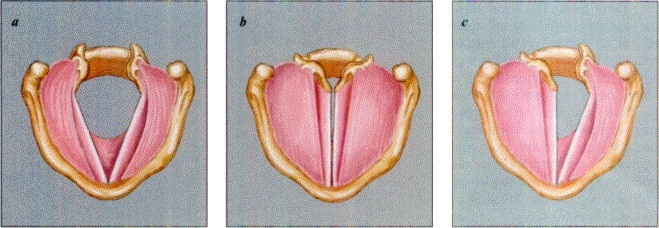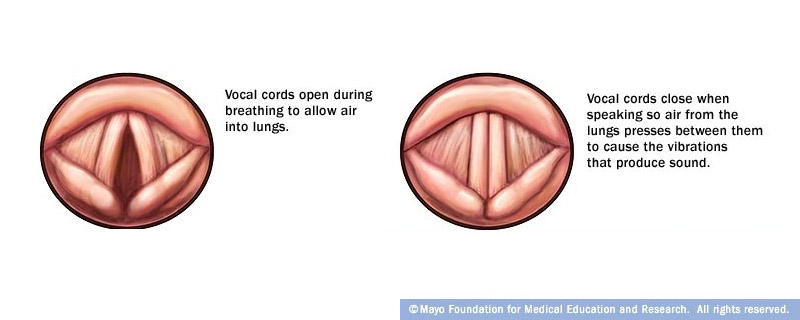What is vocal cord paralysis?
- Vocal cord paresis and paralysis result from abnormal nerve input to the voice box muscles (laryngeal muscles)
- Paralysis is the total interruption of nerve impulse, resulting in no movement
- Paresis is the partial interruption of nerve impulse, resulting in weak or abnormal motion of laryngeal muscles. Paresis/paralysis can happen at any age, from birth to advanced age, in males and females, from a variety of causes
- The effect on patients may vary greatly, depending on the patient’s use of his or her voice: A mild vocal fold paresis can be the end to a singer’s career, but have only a marginal effect on a other people
Vocal cord paralysis causes
- The cause of vocal fold paralysis or paresis can indicate whether the disorder will resolve over time or whether it may be permanent
- When a reversible cause is present, surgical treatment is not usually recommended, given the likelihood of spontaneous resolution of the problem
- Despite advances in diagnostic technology, physicians are unable to detect the cause in about half of all vocal fold paralyses, referred to as idiopathic (due to unknown origins)
- In these cases, paralysis or paresis might be due to a viral infection affecting the voice box nerves (RLN or SLN), or the vagus nerve, but this cannot be proven in most cases
Known causes for vocal cord palsy can include:
- Inadvertent injury during surgery
- Blunt neck or chest trauma
- Tumours of the skull base, neck and chest
- Viral infections

Speech and language therapy for vocal cord paralysis
- Speech therapy for patients with vocal cord paralysis usually focuses on pitch alteration, increasing breath support and loudness
- Finding the correct position for optimal voicing (such as turning the head to one side or manipulating the thyroid cartilage) is very helpful – this is known as the Isshiki maneuver
- Research has shown that voice therapy is an effective intervention in the interim period between diagnosis of the paralysis and final resolution of the problem
Surgery for vocal cord paralysis – thyroplasty
- A thyroplasty is a surgical procedure in which a paralysed or weak vocal cord is moved closer to the centre of the voice box
- Thyroplasty aims to help people with a paralysed vocal cord by;
- Improving the voice
- Lower the chance of food and drink going down the windpipe during eating and drinking
- This is accomplished by injecting a small amount of silicone into the paralysed vocal cord
The following advice sheet will help you plan for a comfortable recovery period after surgery for vocal cord paralysis
Nutrition after surgery for vocal cord paralysis
- The throat is usually a bit sore for a few days to a week post-operatively; we recommend starting out with a fluid diet or soft foods after the procedure
- You may advance your diet as quickly as you feel comfortable
- You can even eat your favourite foods the day after surgery if your throat feels alright
- Most people will take a few days to feel better
Activity
- Limited voice use for a week post-operatively – this means necessary voice use only
- Reduced use of the voice will help post-operative swelling in the vocal cord resolve
- If a longer period of voice limitation is necessary your surgeon will discuss that with you at the one-week follow-up visit
- No heavy lifting or strenuous activity for six weeks after the surgery
Contact your doctor for:
- Problems with breathing
- Problems with eating and drinking
- Pain that is not relieved by your pain medication
- Fever greater than 38.5 degrees




